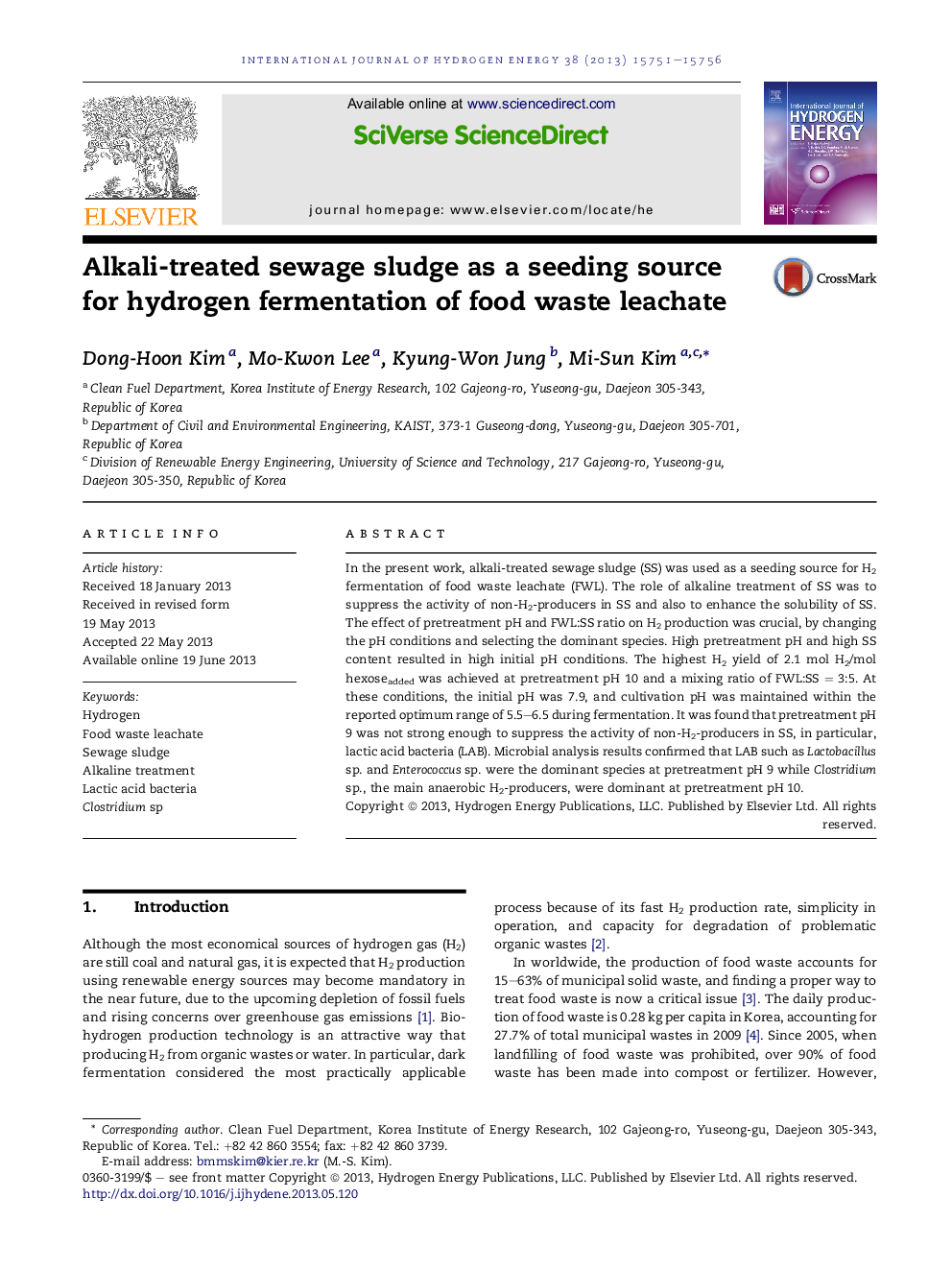| Article ID | Journal | Published Year | Pages | File Type |
|---|---|---|---|---|
| 7721722 | International Journal of Hydrogen Energy | 2013 | 6 Pages |
Abstract
In the present work, alkali-treated sewage sludge (SS) was used as a seeding source for H2 fermentation of food waste leachate (FWL). The role of alkaline treatment of SS was to suppress the activity of non-H2-producers in SS and also to enhance the solubility of SS. The effect of pretreatment pH and FWL:SS ratio on H2 production was crucial, by changing the pH conditions and selecting the dominant species. High pretreatment pH and high SS content resulted in high initial pH conditions. The highest H2 yield of 2.1Â mol H2/mol hexoseadded was achieved at pretreatment pH 10 and a mixing ratio of FWL:SSÂ =Â 3:5. At these conditions, the initial pH was 7.9, and cultivation pH was maintained within the reported optimum range of 5.5-6.5 during fermentation. It was found that pretreatment pH 9 was not strong enough to suppress the activity of non-H2-producers in SS, in particular, lactic acid bacteria (LAB). Microbial analysis results confirmed that LAB such as Lactobacillus sp. and Enterococcus sp. were the dominant species at pretreatment pH 9 while Clostridium sp., the main anaerobic H2-producers, were dominant at pretreatment pH 10.
Related Topics
Physical Sciences and Engineering
Chemistry
Electrochemistry
Authors
Dong-Hoon Kim, Mo-Kwon Lee, Kyung-Won Jung, Mi-Sun Kim,
